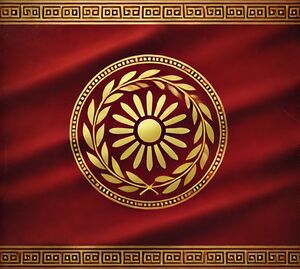Creania
The Kingdom of Creania Creania | |
|---|---|
|
Flag | |
| Capital and largest city | Bernebau |
| Official languages | Creanian |
| Other languages | Calaferran |
| Ethnic groups | Creanian's, Calaferran's, Ethnic Serican's, Qanarian's |
| Religion | Catholicism |
| Demonym(s) | Creanian |
| Government | Constitutional Monarchy |
• King | Rafael |
• Prime Minister | Pablo Cortes |
| Legislature | Parliament |
| House of Lords | |
| House of Commons | |
| Establishment | |
• Fomration of Kingdom of Bernebau | 3 May 1215 |
• Formation of Kingdom of Creania | 22 October 1453 |
• Centralized State | 12 June 1722 |
The Kingdom of Creania is a country in Western Menra, a once powerful nation, the country has seen it's power reduced following the reign of King Gaspar from 1885 to 1912.
Etymology
History
Early Modern Period (17th–18th Century)
Creania, a nation nestled in the southern region of Menra, established itself as a prominent kingdom in the early modern period. Its early economic prosperity stemmed from trade with Speria and colonization efforts in Leonata. The nation’s wealth was derived from sugar plantations, gold mining, and a robust maritime industry. During this era, Creania expanded its influence into the New World, claiming colonies such as Tarranza and San Izba.
However, this prosperity was marred by internal challenges, including reliance on slavery, growing tensions between the monarchy and aristocracy, and periodic uprisings from oppressed groups. These tensions laid the groundwork for the reforms and upheavals of the 19th century.
19th Century: The Era of Reforms and Expansion (1800–1875)
Reign of King Vicente (1855–1885)
The reign of King Vicente marked a turning point in Creanian history. Ascending the throne in 1855, Vicente spearheaded a wave of progressive reforms that sought to modernize the kingdom. These included the gradual abolition of slavery (1855 in Creania; 1875 in its colonies) and efforts to balance royal authority with parliamentary powers. Vicente also oversaw Creania’s entry into the colonization of Kartege, securing Calaferra in 1870 and negotiating agreements that allowed local nobility to retain some power.
Despite these advances, Vicente's reign saw the loss of several Leonatan colonies as Creania’s global influence waned, partly due to competition with rising powers such as the United Federated States of Leonata and Eswal.
Late 19th Century: Militarization and Autocracy (1885–1912)
Reign of King Gaspar (1885–1912)
The ascension of King Gaspar marked a stark departure from Vicente’s progressive policies. Dissolving parliament in 1887, Gaspar began to centralize power, undoing many of his father's reforms. His reign emphasized military expansion, leading to significant conflicts, including:
The San Izba War (1897–1899): Creania lost its last New World colony to the United Federated States of Leonata after a humiliating naval defeat that claimed the life of Crown Prince Joaquin. The Creanian-Austras War (1902–1904): A costly but ultimately fruitless conflict over territorial claims in Kartege.
Gaspar's policies brought economic strain, leading to heavy taxation to rebuild the navy and sustain colonial campaigns. His ambitions to colonize the island nation of Carlion further drained resources, culminating in military failure by 1911.
Early 20th Century: The Reign of King Rafael (1912–Present)
Rafael’s Early Reign (1912–)
At just 23 years old, King Rafael inherited a kingdom burdened by military losses, economic hardship, and the waning loyalty of colonial territories. Rafael's reign has been marked by:
Modernization Efforts: Early attempts to stabilize Creania’s economy through trade agreements with nations such as Lyradon and Schwarzwald. Calaferra’s Growing Unrest: As Creania’s sole remaining colony, Calaferra has become a source of tension, with independence movements gaining traction. Diplomatic Challenges: Balancing relations with neighboring Austras and global powers like Eswal and Lyradon while addressing internal discontent.
Rafael’s charismatic leadership and progressive leanings suggest the potential for reforms akin to his grandfather Vicente's, though his reign remains defined by the legacy of colonialism and conflict.
